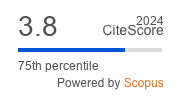Article | Open Access
Identifying the Affordable Housing Shortage: A Study for Oklahoma
| Views: | 2372 | | | Downloads: | 3759 |
Abstract: The study provides an analysis of affordable housing in Oklahoma, US. Like the rest of the country, the state’s housing stock does not meet the affordable housing demand, especially for low-income households. The mismatch is currently aggravated by steady population and employment growth, rising housing costs, and a slowdown in housing construction due to high inflation. First, we introduce the topic with an overview of Oklahoma’s housing inventory, providing information on recurring development patterns and building types. We discuss main household characteristics and compare state-level data with national trends. Second, we analyze the gap between household demand and affordable housing supply across the state and its 22 core-based statistical areas. Using an algorithm running the Department of Housing and Urban Development and US Census Bureau datasets, the gap analysis evaluates household groups by income, comparing them to the distribution of housing units based on tenure, monthly housing costs, and unit size. The results are examined through a cluster analysis, which leads to the development of a classification of housing gaps across the state. We conclude by identifying the composition of the housing stock needed to address the mismatch between supply and demand and discuss policy implications. This research presents findings from a statewide housing needs assessment conducted by a cross-disciplinary team from the University of Oklahoma, and sponsored by the Oklahoma Housing Finance Agency, a state organization that offers affordable housing resources, including loans and rental assistance.
Keywords: affordable housing; cluster analysis; gap analysis; housing shortage; Oklahoma; US
Supplementary Files:
Published:
© Francesco Cianfarani, Shawn Schaefer, Kalyan Mutukundu. This is an open access article distributed under the terms of the Creative Commons Attribution 4.0 license (http://creativecommons.org/licenses/by/4.0), which permits any use, distribution, and reproduction of the work without further permission provided the original author(s) and source are credited.


